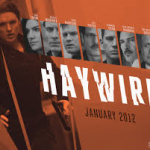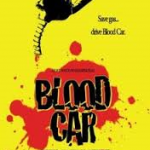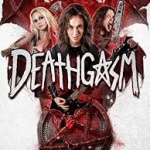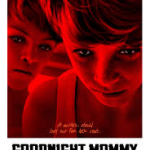
At the risk of offending someone, I’m going to go out on a limb here and say that Steven Soderbergh isn’t my favorite by a long shot. He’s got some good things going for him at times, but his method of storytelling just isn’t my bag – I find it drags, and that’s just my opinion. I own that opinion, and I typically stay away from his work because I find it antagonistic (and there are so many other things I could focus on, like Blood Car). However, when Haywire came out, I was thrilled to death because female action stars – the ones that kick ass just as hard as the boys – are few and far between, and that’s a fucking shame. It’s a resource that still needs tapping, because women can be totally badass. I couldn’t wait to see Gina Carano in action. When I did… I was underwhelmed. Which kills me, because I had wanted to like it. Here are the reasons why it went to hell in a handbasket.
 |
| So much potential. |
Misuse of Gina Carano
I get that a woman is often portrayed as eye candy in action films; likewise, our male action stars are objectified just as heavily, from their washboard abs to their tight t-shirts and swishing hair. This film can’t decide if it wants Carano to be a sexpot, a fashionista, or one of the boys. Now I’m not saying that women need to fit into one role or the other exclusively. Merely observing that Soderbergh didn’t know what to do with her at times, as she fit a little too well into each role without any of the struggle she proclaimed she’d experience. She went from one extreme to the other without much in between, and that, to me, did not feel authentic, especially for someone who claimed to feel far more at ease as one of the boys with a sniper rifle. Which hurts, because her voice is nice and low, she’s built like an actual woman that has muscle tone, and she looks like she can do some decent stunt work. Speaking of stunts (fighting in particular)…
The fight scenes
For covert black ops agents, these people are messy fighters, and I don’t mean that as complimentary in any way. There’s brutal, there’s sucker punch, and then there’s haphazard. Go back and look beyond some of the fight scenes: the punches and kicks are sloppy and uncontrolled. Want a new drinking game? Take a swig every time that someone leaves his or her side open. You don’t do that if you’re highly trained. Hell, I’m not trained, and even I know this. Also, there are many awkward pauses in the fight scenes. There’s a punch, and then there’s way too much time in between the next hit. Again, I can’t imagine that someone from an elite group would leave that much of an opportunity in between hits. Don’t give your enemies a chance to hit back so that the scene can be extended. Be a professional and end it. You don’t like loose ends? Aim for the eyes, then take out the elbow. If you have to shoot, go for the head. It’s that simple.
The pacing
Can someone get out of this car and help push it toward the end? Because the pacing on this thing slowed to a crawl. I found myself waiting for the next action sequence, because at least then, I had the chance to feel something, even if it was disbelief that special ops agents were so slow. The rest of it just felt like filler. Worse, it felt like filler designed around pretty people looking serious. For a 92-minute movie, it sure as hell felt a lot longer. I shouldn’t be looking at the clock that much. Really, I could make myself a sandwich, check my email and fold laundry before anything meaningful happened.
 |
| Walk faster, dammit. |
The soundtrack
I can get behind funk, though you may not want to see me dancing in my kitchen (it makes the baby Jesus cry.). However, the soundtrack of this film goes from lone guitar and bass lines to horn and wah-wah pedal-driven funk. I get that Soderbergh is going for potbroiler action vibe ala the 1970s. The problem here is that it doesn’t fully gel. Want to know what worked for another action flick? The techno in John Wick. The beat helped with getting your heart pumping. This one made me want to smoke a cigarette and have a drink. Not exactly the vibe that goes along with an action flick. It would have been a good soundtrack on a different film without a doubt, but for this one, no.
ACTING
Ever see the bit from Saturday Night Live with Jon Lovitz yelling, “AAAAAAAAAACCCCCCTINNNNNNNNNNG!”? Let’s just say that Channing Tatum is phoning it in. Gina Carano isn’t an actress, and it shows. Fassbender (who I don’t mind as an actor, but looks fucking rough for dude that’s not even 40) tried, but Douglas, Banderas, Paxton and McGregor? Nope. Soderbergh even wasted a perfectly good Michael Angarano, who I actually enjoy despite the fact that he looks 12. How do you take a cast this good and make them completely bland? It’s an honest question. Please feel free to chime in and help me, because it felt like everyone went, “Yeah, Steven wants us to do a movie. It’s a check. what the hell.”
Not without my beige cap
Call me crazy, but when you’re on the run, the goal is to blend in and not have signature outfits that would make you easily identifiable, right? Good god, nothing like a bright beige hat to make you stand out in a crowd. Even when she put on a hoodie, she was still wearing that stupid thing. Non-descript baseball cap, Mallory. Emphasis on “non-descript.” It’s all about blending in. And don’t even get me started on the time she took to put her hair into cornrows for the big battles. I want you to be able to enjoy time with your loved ones, and we’ll be here all night.
Baby, I know we’ve only just met…
…okay, maybe not just met. But for two people that had a one-night stand in Barcelona about a week prior, there was a lot of emotional attachment played up upon the death of Mr. Charming Potato. Now some on-screen couples, we can totally buy this dynamic in a short time frame, because they click immediately and have insane chemistry. It helps establish the willing suspension of disbelief. These two? There was potential, but again, it felt like no one knew what to do with these two. They have about as much raw sexuality as a steamed carrot atop a bed of overcooked spinach. I’ll let you decide which one is which.
Just wait for the tide
Have you never watched a James Bond film, Mallory? Don’t let the bad guy live, even if it looks like he’s close to dying. Don’t walk away; wait until he’s confirmed dead. Don’t just assume that he’s going to drown. Given, that’s how you wind up with a sequel, but it’s also how you wind up dead. For someone who proclaimed not to like loose ends, she certainly left one. Grab a flask with some aged whiskey and watch, lady. He just put you through hell; smile and wave as the tide comes in. Don’t just walk away.
 |
| Ugh. |
The empty airport at the transfer of Jiang
No airport is that empty, ever. No. Not buying it.
If you’re smart, you’ve avoided this one. If not, you’re comiserating. Either way, at least Soderbergh picked the right name for this one. It certainly felt like a mess.




























